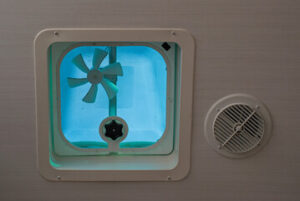Heating And Cooling Options For Your Van
Adding insulation to your van can make it a much more comfortable place to be. Insulation panels are usually made of reflective foil and can be stuck onto the glass of your van’s windows. These panels can help your van stay at a comfortable temperature while also increasing its privacy. There are several different ways you can install these panels in your van. Read on to learn more.
Solar gain heating and cooling systems work by directing the energy from the sun into a building’s interior. These systems can be indirect or direct. Direct solar gain systems use a reflective surface to collect energy from the sun and transfer it to the building’s interior. Indirect solar gain systems use an opaque surface to collect energy.
Indirect solar gain systems use a glazed collector, also known as a Trombe wall. This wall is typically eight to sixteen inches thick and coated with dark, heat-absorbing material. The dark material is then covered with single or double layers of glass. The glass reflects the heat from the sun, storing the heat and conducting it slowly through the masonry.
Passive solar design works to minimize solar gain by carefully selecting the glazing. This allows you to control the percentage of solar energy entering the building throughout the day. It can be accomplished by minimizing window areas on the east and west sides and by strategically placing window coverings and shading devices. In addition to window coverings, commercial buildings can benefit from low-solar gain glazing.
Indirect gain systems, the sun’s energy is captured by a thermal mass located between the window and the living area. This thermal mass absorbs up to 30 percent of the sunlight and transfers it to the living space. Indirect gain systems are also ideal for vans and other vehicles that need to keep cool.
Propane heaters are a great option for heating and cooling vans. These units use propane as a fuel source and are very energy efficient. They can also heat up water continuously, so there is no need to keep a separate water tank. Another option is to use a diesel-powered heater. These units use the fuel in the van’s diesel fuel tank, so you don’t have to run to a propane station to get gas. These units are a bit more expensive, but they work more efficiently and require less maintenance.
These portable propane heaters are popular with van lifers because they are inexpensive and easy to install. They connect to the same propane tank as the cooking appliances and are easy to store when not in use. Portable propane heaters are also very easy to set up and use, and they don’t require any special plumbing.
Propane heaters are easy to use and can quickly warm small spaces. However, they must be watched carefully to avoid harmful levels of carbon monoxide. It is important to purchase a carbon monoxide detector to monitor the levels. Also, you should check gas lines to make sure they’re not damaged. If they’re perforated or worn, you should replace them. Propane heaters should never be left running overnight or when you aren’t in the van.
Another option is a heat pump. This type of heater is usually used to heat the entire RV and works with shore power or a generator. They also give off a dry heat, which helps keep the inside of the van from becoming humid.
There are a variety of options for window ac units for your heating and cooling van. Whether you want a simple window ac that does not take up space or one that is more powerful, you will find several options to choose from. Window ac units are typically not the sexiest or most stealthy solution, but they do the job just fine and are inexpensive enough to fit in almost any van.
Window AC units for heating and cooling vans are easy to install. They slide out through the sidewall hatch when you are traveling. When you stop, the hatch cover closes over the opening. The slide is the same type you would find at a hardware store. This allows for easy and convenient access to the window AC while not interfering with any other interior space.
